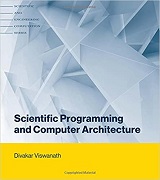Scientific Programming and Computer Architecture

简介:
什么使计算机程序快或慢?为了回答这个问题,我们必须了解编程语言的抽象概念,看看计算机是如何工作的。本书研究并解释了各种科学编程模型 (与科学家相关的编程模型),重点是编程构造如何映射到计算机体系结构的不同部分。出现了两个主题: 程序速度和程序模块化。在本书中,前提是 “深入了解”,并且讨论与特定程序有关。本书深入到链接器,编译器,操作系统和计算机体系结构,以了解计算机的不同部分如何与程序交互。它首先回顾了C/C,并解释了库,链接器和makefile的工作原理。涵盖的编程模型包括Pthreads,OpenMP,MPI,TCP/IP和CUDA。对计算机工作方式的强调使读者进入计算机体系结构,并偶尔进入操作系统内核。研究的操作系统是Linux,这是科学计算的首选平台。Linux也是开源的,允许用户查看其内部工作。简短的附录提供了用于计时程序的机器的有用表格。
英文简介:
What makes computer programs fast or slow? To answer this question, we have to get behind the abstractions of programming languages and look at how a computer really works. This book examines and explains a variety of scientific programming models (programming models relevant to scientists) with an emphasis on how programming constructs map to different parts of the computer's architecture.
Two themes emerge: program speed and program modularity. Throughout this book, the premise is to "get under the hood," and the discussion is tied to specific programs.
The book digs into linkers, compilers, operating systems, and computer architecture to understand how the different parts of the computer interact with programs. It begins with a review of C/C++ and explanations of how libraries, linkers, and Makefiles work. Programming models covered include Pthreads, OpenMP, MPI, TCP/IP, and CUDA.The emphasis on how computers work leads the reader into computer architecture and occasionally into the operating system kernel. The operating system studied is Linux, the preferred platform for scientific computing. Linux is also open source, which allows users to peer into its inner workings. A brief appendix provides a useful table of machines used to time programs.
- 书名
- Scientific Programming and Computer Architecture
- 译名
- 科学规划和计算机架构
- 语言
- 英语
- 年份
- 1997
- 页数
- 16页
- 大小
- 76.05 kB
- 下载
 Scientific Programming and Computer Architecture.pdf
Scientific Programming and Computer Architecture.pdf- 密码
- 65536
最后更新:2025-04-12 23:54:40